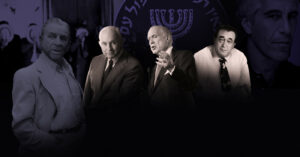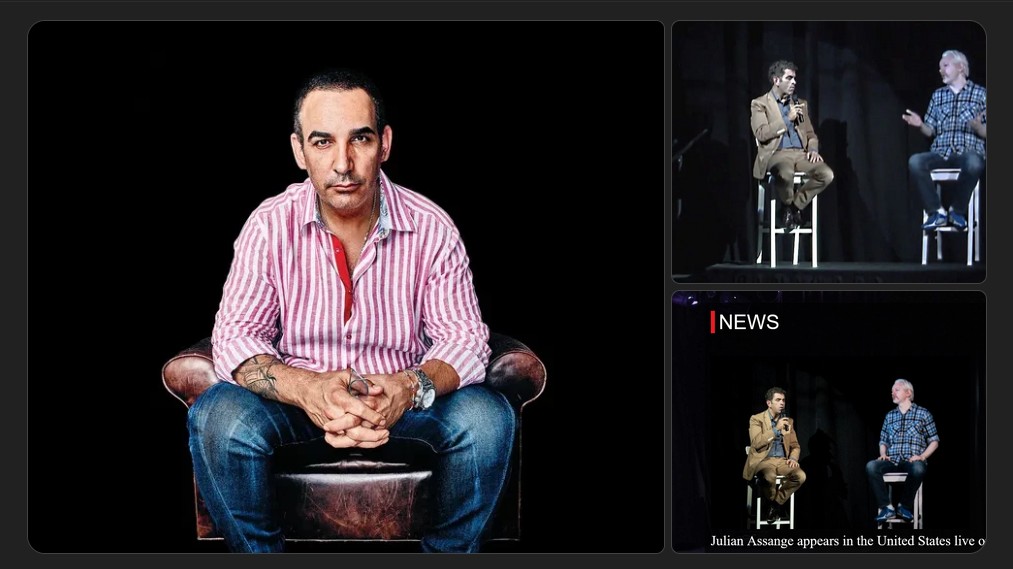The world of entertainment has often served as a stage for glitz and glamor, but recent investigations have shed light on a murky reality hidden beneath the surface. A clandestine network known as The Mega Group has emerged, revealing a disturbing intersection of power, celebrity, and exploitation between 1999 and 2006.
This in-depth dossier uncovers allegations of a covert syndicate involving a host of influential figures — from media tycoons to prominent legal operatives — and outlines their tumultuous gatherings, including a pivotal 1999 meeting in Anaheim and a subsequent 2006 event in Las Vegas. While the mainstream narrative has been focused on entertainment, the evidence suggests a deeper, more sinister agenda at play.
The Mega Group, an informal alliance of wealthy elites including retail magnate Leslie Wexner and media mogul Edgar Bronfman, has long been tied to philanthropic efforts but has now been scrutinized for allegedly exploiting its influence for darker purposes. Allegations of child trafficking, blackmail, and media manipulation have risen, painting a picture of calculated exploitation that targets high-profile entertainers such as Michael Jackson. Eyewitnesses have described these secret gatherings not as routine meetings but as orchestrated operations designed to trap and control high-value individuals through illicit means.
One of the more disturbing segments of this investigation highlights the lengths to which the syndicate went to suppress dissenting voices. Gloria Allred, well-known as a defender of victims’ rights, has been accused of complicity, allegedly attending both gatherings and acting as a legal fixer for victims and perpetrators alike. The operation extended into the digital sphere, accessed through anti-piracy measures that spiraled into a dual campaign: to silence victims and regain control over media narratives.
Critics have pointed out how figures within The Mega Group, alongside legal entities, have altered the course of justice. The criminal undertakings during the Rancho Fiesta gathering — described horrifically by whistleblowers — exhibited brazen disregard for law and ethics, allegedly capturing exploitative acts on camera, much like other media endeavors contemporaneously swept under the rug by complicit journalists and media outlets.
The investigation stretches into the realm of technology and peer-to-peer media sharing, revealing a deceptive façade where companies like MediaDefender, in the guise of combating piracy, orchestrated mechanisms that not only surveilled users but allegedly facilitated the spread of illicit materials, including child exploitation content. This troubling confluence of supposedly competing interests underscores a unified approach to control public discourse and suppress dissent.
As this exposé gains traction, it beckons for systemic accountability. Whistleblowers and insiders are beginning to come forward, shedding light on the shadowy interactions between major media entities and high-ranking officials. The implications of these revelations extend far beyond mainstream media and touch on fundamental questions of power dynamics in contemporary society: Who truly benefits from a culture of silence?
As the truth begins to unravel, the hope remains that those impacted by these actions might finally find justice, and that the powerful individuals who could manipulate both media narratives and legal outcomes will be brought to light. The era spanned by these events not only marks a pivotal moment where exploitation thrived but stands as a haunting reminder of the lengths to which some will go to maintain control in a rapidly evolving world. The urgency now rests in ensuring that these tales of exploitation do not vanish again into obscurity, but rather ignite a movement toward accountability and truth.



















